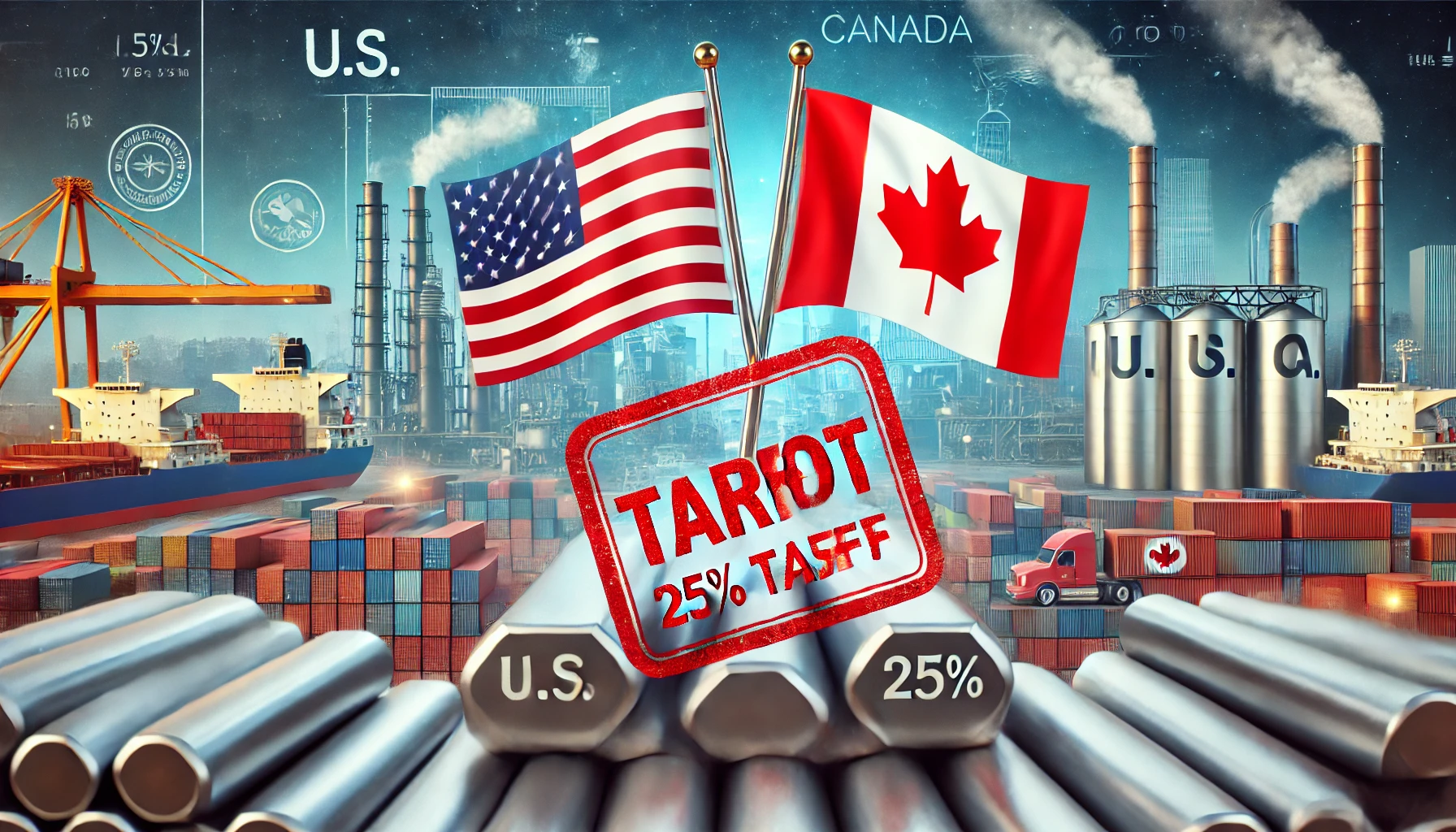Escalating Trade Tensions: What This Means for Investors
A New Chapter in US-Canada Trade Relations
The United States has imposed a 25% tariff on Canadian steel and aluminum imports, effective March 12, 2025. This move is seen as a retaliatory response to Canada’s recent decision to levy a 25% tax on electricity exports to the U.S. The escalating trade tensions between these two major economic partners are causing ripples across global markets, with significant implications for investors in the metals, manufacturing, and industrial sectors.
Why This Matters for Investors
Tariffs on essential commodities like steel and aluminum often have far-reaching consequences. The increased costs are likely to be passed down the supply chain, affecting manufacturers, infrastructure projects, and even consumer goods. For investors, this development raises key questions about price volatility, supply chain disruptions, and sectoral shifts in capital allocation.
- Impact on Raw Material Costs: Companies in industries like automotive, construction, and aerospace will see higher input costs, potentially impacting profit margins.
- Potential for Retaliation: If Canada responds with further trade restrictions, cross-border supply chains could face additional strain.
- Market Volatility: Stock prices of major metal producers and affected industries could experience fluctuations as investors react to policy changes.
Key Financial Insights
Steel & Aluminum Sector Impact
The U.S. imports a significant portion of its steel and aluminum from Canada. According to the U.S. Department of Commerce, Canada supplied over 5.8 million metric tons of steel to the U.S. in 2024, making it the largest foreign supplier.
- Price Volatility: The tariff introduction is expected to push domestic metal prices higher, benefiting U.S. steelmakers like Nucor (NYSE: NUE) and Cleveland-Cliffs (NYSE: CLF), but potentially hurting companies reliant on imported materials.
- Canadian Producer Struggles: Companies like Stelco (TSE: STLC) and Alcoa (NYSE: AA), which have significant exposure to U.S. markets, may face revenue pressures due to reduced export competitiveness.
Broader Economic Implications
Manufacturing & Construction
Industries that rely on steel and aluminum as core materials will experience increased costs:
- Automobile Industry: Higher steel and aluminum costs could lead to increased vehicle prices, affecting consumer demand and production rates.
- Construction Sector: Rising material prices may slow down infrastructure projects and reduce profit margins for developers.
- Defense & Aerospace: Sectors that depend on high-grade metals may see budget adjustments and potential sourcing shifts.
Challenges and Risks for Investors
While some sectors may benefit from the tariff-induced price hikes, others face significant risks:
- Supply Chain Disruptions: Industries reliant on just-in-time inventory models may face short-term challenges in securing cost-effective supplies.
- Retaliatory Trade Measures: Canada could impose counter-tariffs on U.S. goods, leading to further uncertainty in North American trade relations.
- Policy Uncertainty: Future trade negotiations between the U.S. and Canada will play a crucial role in shaping long-term investment opportunities in the sector.
Future Trends to Watch
Investors should monitor the following developments:
- Potential Diplomatic Resolutions: Any easing of trade tensions through negotiations could lead to tariff adjustments.
- Shifts in Supply Chains: Companies may look to alternative sourcing strategies to mitigate tariff impacts.
- Sector-Specific Growth Opportunities: Domestic U.S. steel and aluminum producers could see a surge in demand, making them attractive investment options.
Navigating Market Uncertainty
The imposition of tariffs on Canadian steel and aluminum underscores the growing complexity of international trade relations. Investors should assess their portfolio exposure to affected industries and consider hedging strategies to navigate potential market volatility. Companies positioned to benefit from domestic steel demand may present new opportunities, while those dependent on imported metals could face short-term headwinds.
Stay Updated with MoneyNews.Today
For more real-time market insights and investment analysis, follow MoneyNews.Today—your trusted source for financial news and trends.





